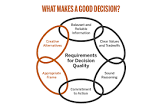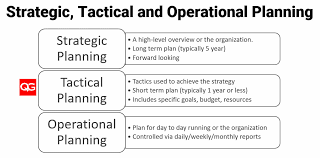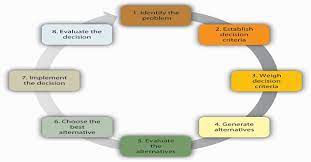Participatory Decision Making: Empowering Individuals and Building Stronger Communities
In a world where decisions are often made by a select few, participatory decision making stands out as an empowering approach that values the voices and opinions of every individual involved. This inclusive process not only leads to better outcomes but also fosters a sense of ownership and unity within communities.
Participatory decision making, at its core, involves involving stakeholders in the decision-making process. It recognizes that those who are directly affected by a decision should have the opportunity to contribute their perspectives and ideas. This approach can be applied in various settings, including organizations, governments, and community initiatives.
One of the key benefits of participatory decision making is that it brings diverse perspectives to the table. By involving individuals from different backgrounds, experiences, and expertise levels, a more comprehensive understanding of the issue at hand can be achieved. This diversity helps in generating innovative ideas, identifying potential risks or challenges, and ultimately arriving at well-informed decisions.
Furthermore, participatory decision making promotes transparency and accountability. When individuals have an active role in the decision-making process, they are more likely to understand the reasoning behind certain choices and feel accountable for their implementation. This fosters trust between stakeholders and ensures that decisions are made with integrity.
Another significant advantage of participatory decision making is its ability to build stronger communities. When individuals feel heard and valued within their community or organization, they develop a sense of ownership over shared goals. This sense of ownership leads to increased engagement, collaboration, and a deeper commitment to achieving collective objectives. Participatory decision making strengthens social bonds by creating spaces for open dialogue and fostering mutual respect among participants.
Implementing participatory decision-making processes may require time and effort; however, the benefits far outweigh the challenges. To ensure successful outcomes, it is crucial to establish clear guidelines for participation, provide necessary resources for information sharing and communication platforms, and create an environment that encourages active engagement.
In conclusion, participatory decision making is a powerful tool for empowering individuals and building stronger communities. By embracing this approach, we can tap into the collective wisdom and creativity of diverse stakeholders, leading to more inclusive, transparent, and effective decision-making processes. Let us strive for a world where everyone has a voice and the opportunity to shape their future through participatory decision making.
5 Essential Tips for Effective Participatory Decision Making
- Encourage participation from all stakeholders
- Clarify roles and responsibilities
- Seek input from diverse perspectives
- Take time to listen
- Reach consensus when possible
Encourage participation from all stakeholders
Encouraging Participation from All Stakeholders: A Key to Effective Decision Making
When it comes to participatory decision making, one crucial tip stands out above the rest: encourage participation from all stakeholders. In order to make well-informed and inclusive decisions, it is essential to create an environment where every individual’s voice is heard and valued.
By actively involving all stakeholders in the decision-making process, you tap into a wealth of diverse perspectives, experiences, and expertise. This inclusivity ensures that decisions are not made in isolation or based on limited information. Instead, it allows for a comprehensive understanding of the issue at hand and promotes more thoughtful and effective solutions.
Encouraging participation from all stakeholders also fosters a sense of ownership and commitment. When individuals feel that their opinions matter and that they have a stake in the decision-making process, they are more likely to be engaged and invested in the outcomes. This leads to increased collaboration, cooperation, and accountability among participants.
To implement this tip effectively, it is important to create an open and welcoming space for participation. Establish clear communication channels where stakeholders can freely express their ideas, concerns, and suggestions. Provide opportunities for active engagement such as meetings, workshops, or online platforms where individuals can contribute their thoughts.
Additionally, ensure that everyone has equal access to information related to the decision being made. Transparently share relevant data, reports, or research findings so that all stakeholders are well-informed before providing their input. This helps level the playing field and ensures that decisions are based on accurate information rather than personal biases or limited knowledge.
It is also essential to be mindful of power dynamics within the decision-making process. Create an atmosphere where individuals feel comfortable speaking up regardless of their position or status. Encourage respectful dialogue and active listening among participants so that diverse perspectives can be fully understood and considered.
In conclusion, encouraging participation from all stakeholders is a key tip for successful participatory decision making. By valuing and including the voices of every individual involved, you unlock the potential for more informed decisions, increased ownership, and stronger outcomes. Embrace this tip to foster a culture of inclusivity and collaboration in your decision-making processes.
Clarify roles and responsibilities
Clarify Roles and Responsibilities: Enhancing Participatory Decision Making
When it comes to participatory decision making, one crucial tip that can greatly enhance the process is to clarify roles and responsibilities. By clearly defining who is responsible for what, participants can effectively contribute their expertise, make informed decisions, and work collaboratively towards shared goals.
In any decision-making process, having a clear understanding of roles and responsibilities helps avoid confusion and ensures that everyone knows what is expected of them. When roles are defined, it becomes easier to assign tasks, delegate responsibilities, and establish accountability. This clarity promotes efficiency and prevents duplication of efforts.
By clarifying roles and responsibilities within participatory decision making, each participant can contribute their unique skills and perspectives effectively. For example, someone may be responsible for gathering data or conducting research, while another person may take on the role of facilitating discussions or synthesizing information. When everyone understands their specific role, they can focus on fulfilling their duties to the best of their abilities.
Moreover, clarifying roles helps in balancing power dynamics within the decision-making process. It ensures that all participants have an equal opportunity to contribute and be heard. By distributing responsibilities fairly, participatory decision making becomes more inclusive and democratic.
Another benefit of clarifying roles is that it allows for better coordination among participants. When everyone knows their specific responsibilities, they can align their efforts towards a common objective. This coordination minimizes misunderstandings or conflicts that may arise due to overlapping tasks or unclear expectations.
To effectively clarify roles and responsibilities in participatory decision making, it is essential to communicate openly with all stakeholders involved. Establishing clear guidelines from the beginning helps set expectations and avoids potential misunderstandings down the line. Regularly revisiting these roles throughout the process allows for adjustments as needed.
In conclusion, clarifying roles and responsibilities is a valuable tip for enhancing participatory decision making. By ensuring that each participant understands their specific role within the process, we can foster a collaborative environment, promote efficiency, and achieve better outcomes. Let us embrace this practice to create a more inclusive and effective decision-making culture.
Seek input from diverse perspectives
Seeking input from diverse perspectives is a crucial tip in participatory decision making. When making important choices, it is essential to gather insights and opinions from individuals with different backgrounds, experiences, and expertise levels.
Diversity brings a wealth of unique ideas and viewpoints to the table. By actively seeking input from a wide range of people, you can ensure that all relevant factors are considered and that blind spots or biases are minimized. Different perspectives challenge assumptions, spark creativity, and offer alternative solutions that may have otherwise been overlooked.
Incorporating diverse perspectives also promotes inclusivity and equity. It gives a voice to marginalized groups who may have been historically underrepresented in decision-making processes. By actively seeking their input, you demonstrate a commitment to creating an environment where everyone’s opinions are valued and respected.
To implement this tip effectively, it is important to create opportunities for participation from various stakeholders. This may involve reaching out to individuals from different departments within an organization, engaging community members with varied backgrounds, or seeking external expertise when necessary. Providing platforms for open dialogue and actively listening to each perspective helps foster an inclusive environment where diverse voices can be heard.
Remember that seeking input from diverse perspectives is not just about ticking boxes or meeting quotas; it is about genuinely valuing the contributions of every individual involved. It requires active listening, empathy, and a willingness to consider viewpoints that may differ from your own.
In conclusion, incorporating diverse perspectives in participatory decision making leads to more robust outcomes by tapping into the collective wisdom of different individuals. By embracing this tip, you can make more informed decisions that reflect the needs and aspirations of a broader range of stakeholders. Let us strive for inclusivity and diversity in our decision-making processes for a better future.
Take time to listen
Participatory decision making is all about inclusivity and valuing the perspectives of every individual involved. And one crucial tip that can greatly enhance this process is to take the time to listen.
Listening is an essential skill that allows us to understand and appreciate the thoughts, ideas, and concerns of others. When engaging in participatory decision making, taking the time to actively listen demonstrates respect and creates a safe space for everyone’s voices to be heard.
By actively listening, we open ourselves up to different perspectives and insights that we may not have considered initially. Each person brings their unique experiences and knowledge to the table, and by truly listening, we can gain a deeper understanding of the complexities surrounding the decision at hand.
When we listen attentively, we show others that their opinions matter. This encourages individuals to feel more comfortable expressing themselves openly and honestly. It builds trust among participants, fostering an environment where collaboration flourishes.
Moreover, listening allows us to identify common ground and potential areas of compromise. Through active listening, we can uncover shared values or goals that can serve as a foundation for consensus-building. It helps bridge gaps between differing viewpoints, leading to more well-rounded decisions that take into account multiple perspectives.
Taking the time to listen also helps mitigate conflicts or misunderstandings that may arise during the decision-making process. By being attentive listeners, we can clarify any misconceptions, address concerns promptly, and ensure effective communication among all participants.
In summary, listening plays a vital role in participatory decision making. It promotes inclusivity by giving everyone an equal opportunity to contribute their thoughts and ideas. By actively listening to one another, we foster respect, trust, collaboration, and ultimately make more informed decisions that reflect the collective wisdom of all involved. So let’s remember this valuable tip: take the time to listen – it’s a small act that yields significant results in participatory decision making.
Reach consensus when possible
When it comes to participatory decision making, reaching consensus holds immense value. Consensus refers to a collective agreement or shared understanding among the participants involved in the decision-making process. While achieving consensus may not always be possible or practical, striving for it can lead to stronger outcomes and increased stakeholder satisfaction.
Reaching consensus involves actively seeking input from all parties involved and working towards finding a solution that everyone can support. It requires open-mindedness, active listening, and a willingness to explore different perspectives. By engaging in constructive dialogue and considering various viewpoints, participants can uncover common ground and identify mutually beneficial solutions.
Consensus-based decision making encourages collaboration and fosters a sense of ownership among stakeholders. When individuals feel that their opinions have been heard and considered, they are more likely to be invested in the decision’s success. This shared responsibility helps build trust, strengthens relationships, and promotes a positive working environment.
While striving for consensus is important, it is also crucial to acknowledge that it may not always be achievable or appropriate in every situation. Some decisions may require swift action or involve complex factors where complete agreement is difficult to reach. In such cases, alternative decision-making methods like voting or expert opinions may be necessary.
However, even if full consensus cannot be achieved, participatory decision making still holds value. The process itself allows for meaningful engagement, encourages diverse perspectives, and ensures transparency throughout the decision-making journey.
In summary, reaching consensus should be considered an essential aspect of participatory decision making whenever possible. It promotes collaboration, ownership, and trust among stakeholders while fostering an inclusive environment where everyone’s voice is heard. By valuing consensus as a guiding principle in our decision-making processes, we can pave the way for more effective outcomes and stronger relationships within our communities and organizations.




